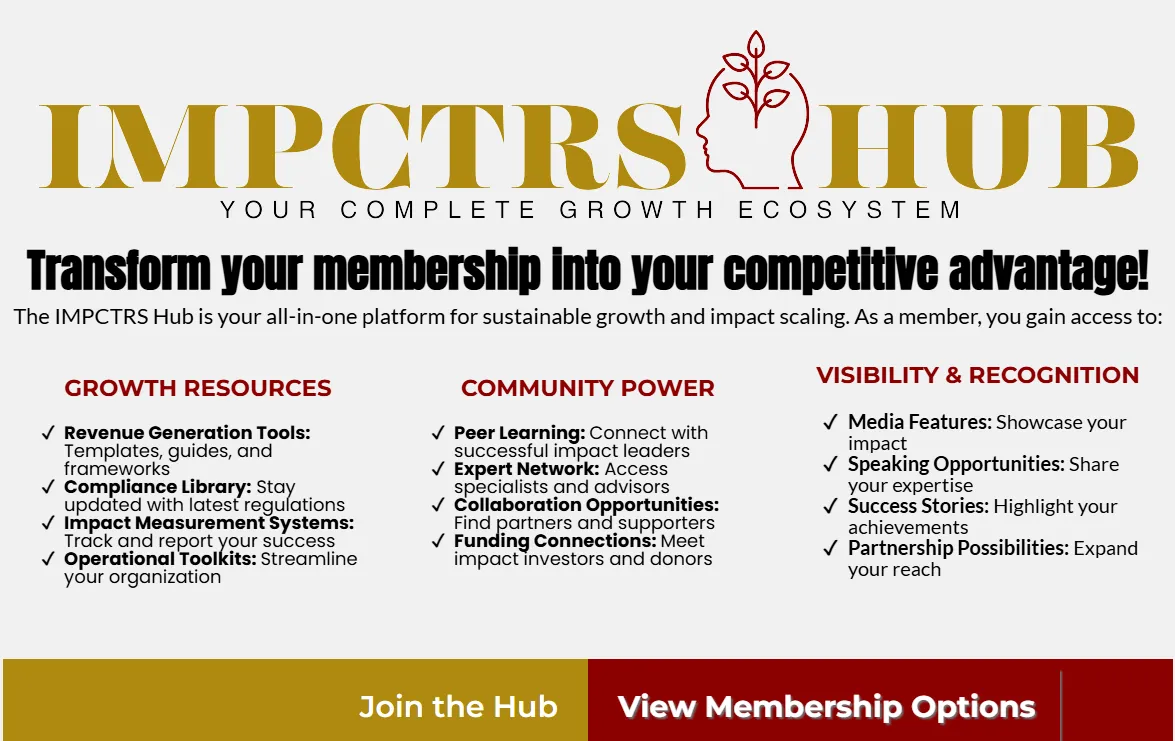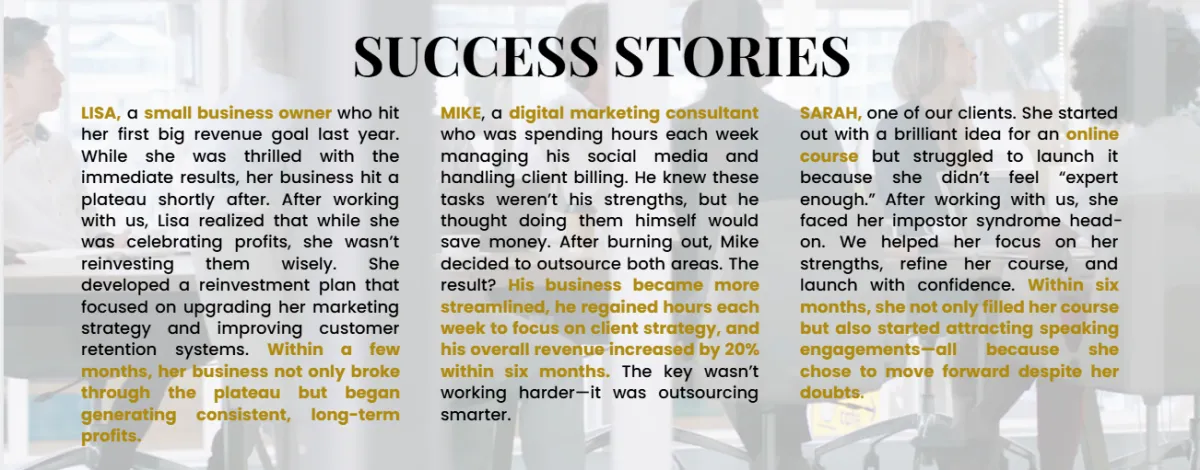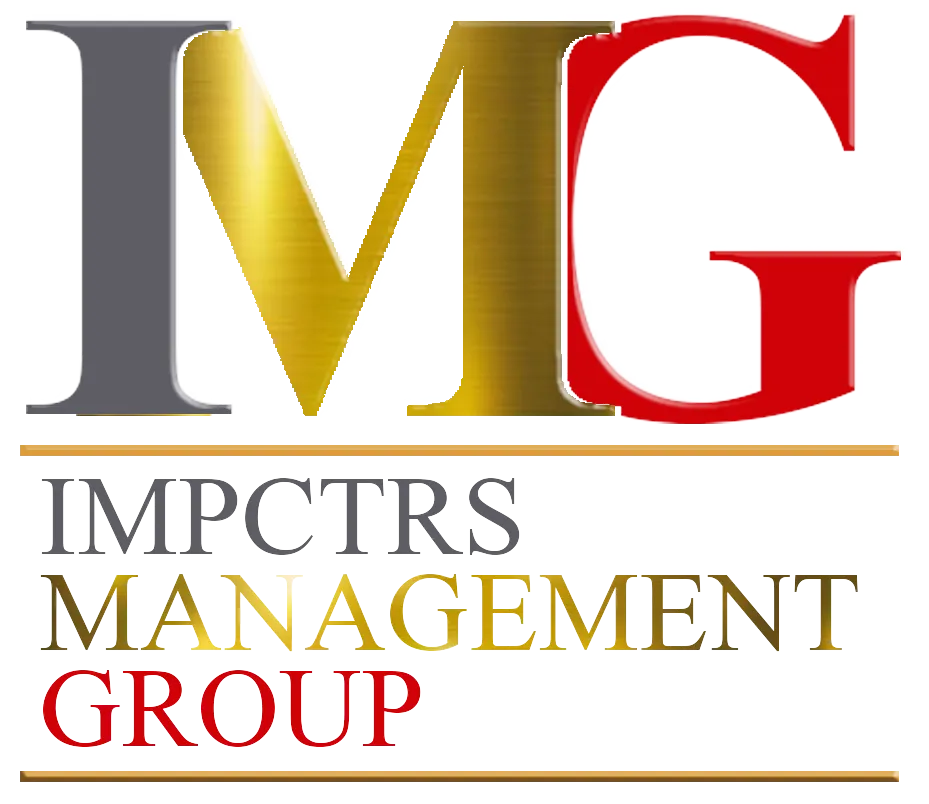See Our Latest Blogs
The Impctrs Management Group blog is where strategy meets action. We deliver powerful insights, practical strategies, and AI-driven solutions designed to help social impact businesses amplify their reach, fund their missions, and scale their operations sustainably. Every article is crafted to equip you with the knowledge and tools to lead with purpose and grow with confidence.

The Strategic Imperative: Why Market Research is Non-Negotiable for Nonprofit Success
"Market research isn't just data collection—it's the strategic compass that guides your nonprofit from hoping for impact to ensuring it with precision and purpose." — Tracy V. Allen
Beyond Assumptions: The Critical Role of Market Research
Every day, nonprofits make dozens of consequential decisions about programs, services, messaging, and resource allocation. Yet too often, these decisions stem from assumptions rather than evidence. Without rigorous market research, organizations navigate complex social challenges with incomplete maps, potentially missing critical opportunities and wasting precious resources.
Many nonprofit leaders mistakenly view market research as an academic exercise requiring specialized expertise or substantial financial investment. Others believe it's primarily a tool for profit-driven businesses rather than mission-driven organizations. These misconceptions prevent organizations from accessing critical insights that could dramatically enhance their impact and sustainability.
In reality, effective market research represents one of the highest-return investments a nonprofit can make. Studies consistently show that organizations implementing data-driven decision-making outperform their peers in key metrics including program outcomes, donor retention, and financial sustainability. For mission-driven organizations working with limited resources, this efficiency advantage becomes not just beneficial but essential.
Demystifying the Research Process
The term "research" often conjures images of complex methodologies, statistical analysis, and academic rigor. While these approaches certainly have their place, market research for nonprofits encompasses a much broader spectrum of information-gathering activities—many of which you're likely already conducting informally.
Every time you:
Document feedback from program participants
Track which newsletter topics generate the most engagement
Notice patterns in donor giving behavior
Observe which social media posts resonate most strongly
Collect testimonials from stakeholders
You're gathering valuable market intelligence. The key distinction between these informal activities and strategic market research lies not in the complexity of methods but in intentionality, systematization, and application of the insights gained.
Effective market research doesn't necessarily require expensive consultants or sophisticated technology platforms. Rather, it demands a commitment to asking thoughtful questions, listening carefully to the answers, and allowing those insights to inform strategic decisions. The sophistication of your methodology should match the scope of your inquiry and the decisions it will inform.
Seven Strategic Applications of Market Research for Nonprofits
1. Identifying Specialized Audience Segments Within Your Broader Community
Your nonprofit likely serves a broadly defined community, but within that community exist numerous specialized segments with distinct needs, preferences, and communication styles. Without identifying these segments, your programs and messaging remain generalized, potentially resonating deeply with no one.
Market research reveals these critical segments, allowing you to:
Customize programming to address specific needs
Develop targeted messaging that speaks directly to each group's priorities
Allocate resources proportionally to segment size and strategic importance
Identify underserved segments representing growth opportunities
Research Techniques:
Demographic and psychographic analysis of current participants
Detailed intake questionnaires that capture relevant segmentation variables
Community mapping exercises with local partners
Analysis of service utilization patterns across different constituent groups
Key Questions to Explore:
What are your most significant pain points related to our mission area?
What single change would most dramatically improve outcomes for you?
Beyond what we currently provide, what additional support would most benefit you?
How do you perceive the value of various services, and what factors influence that perception?
2. Quantifying Your Addressable Market
Many nonprofits have only vague understandings of their potential reach. This knowledge gap creates challenges for strategic planning, resource allocation, and communicating impact potential to funders and partners.
Market research provides critical market sizing data, enabling you to:
Develop realistic growth projections
Identify the gap between current reach and total potential
Prioritize geographic or demographic expansion areas
Set appropriate organizational capacity goals
Research Techniques:
Analysis of demographic and census data
Review of national and regional needs assessments
Meta-analysis of published research on issue prevalence
Geographic information system (GIS) mapping of community characteristics
Surveys with stratified random sampling to estimate needs prevalence
Implementation Guidance: Begin with secondary research using publicly available data sources like census information, public health statistics, and published studies. Supplement this foundation with primary research targeting specific information gaps. Triangulate between multiple data sources to increase confidence in your market size estimates.
3. Identifying Service Gaps and Unmet Needs
Every community contains service gaps—needs that remain unaddressed by existing programs and providers. These gaps represent both community challenges and organizational opportunities. Identifying them requires looking beyond the obvious to understand unstated or emerging needs.
Effective gap analysis research helps you:
Discover unmet needs that align with your mission and capabilities
Prioritize program development initiatives
Avoid duplicating services already effectively provided by others
Position your organization uniquely in the nonprofit ecosystem
Research Techniques:
Community needs assessments
Focus groups with diverse stakeholder segments
Service mapping across the local nonprofit ecosystem
Interviews with referral partners and adjacent service providers
Journey mapping of client experiences navigating existing systems
Research Implementation: Organize focus groups with 6-8 participants representing different stakeholder perspectives. Create a psychologically safe environment where participants feel comfortable sharing genuine feedback rather than what they think you want to hear. Use skilled facilitation to ensure all voices are heard, not just the loudest or most articulate.
4. Conducting Comprehensive Competitive Analysis
The term "competitive analysis" often feels uncomfortable in the nonprofit sector, where collaboration rather than competition typically represents the stated value. However, understanding the landscape of organizations addressing similar needs remains essential for strategic positioning and resource stewardship.
A thorough competitive landscape analysis reveals:
Areas where service duplication occurs
Potential partnership opportunities with complementary organizations
Unique organizational strengths and differentiators
Gaps in collective community response to critical needs
Research Techniques:
Service mapping across organizations with similar missions
Analysis of other organizations' public messaging and positioning
Interviews with funders regarding their perspectives on the ecosystem
Participant research regarding perceptions of different providers
Benchmark analysis of program outcomes across organizations
Strategic Application: Use competitive analysis not to "defeat" other organizations but to find your unique place in the ecosystem. Identify opportunities for distinctive contribution rather than replicating what others already do effectively. Document where collaboration would strengthen collective impact, and where maintaining separate initiatives better serves the community.
5. Articulating Your Unique Value Proposition
Your organization's unique value proposition (UVP) articulates why someone should engage with your organization rather than alternatives—including other nonprofits, for-profit services, or simply maintaining the status quo. A compelling UVP doesn't emerge from internal brainstorming alone; it must be validated through research with those you serve.
Research-driven UVP development helps you:
Craft messaging that resonates powerfully with priority audiences
Make strategic decisions that reinforce your distinctive strengths
Focus resources on activities that leverage your unique capabilities
Communicate your essential contribution to funders and partners
Research Techniques:
Comparative analysis of your services versus alternatives
Structured feedback sessions testing potential UVP statements
Exit interviews with participants regarding most valued aspects
A/B testing of different value propositions in communications
Word association and perception research with key stakeholders
Action Steps: Draft several potential value proposition statements based on your understanding of organizational strengths and stakeholder needs. Test these statements with diverse stakeholder groups, paying careful attention to emotional responses as well as intellectual feedback. Refine based on this input, then test again until you've developed a UVP that consistently resonates.
6. Evaluating Program Effectiveness and Relevance
Even the most thoughtfully designed programs require regular evaluation to ensure they continue meeting constituent needs effectively. As communities evolve, economic conditions shift, and new challenges emerge, programs must adapt accordingly.
Ongoing program evaluation research enables you to:
Identify aspects of programs that create the greatest value
Recognize when programs require significant redesign
Document outcomes compelling to funders and partners
Continuously improve service delivery and participant experience
Research Techniques:
Pre and post-service assessments measuring targeted outcomes
Longitudinal studies tracking impact sustainability over time
Participant satisfaction and feedback surveys
Observation of program delivery and participant engagement
Comparative analysis of different program delivery models
Research Best Practices: Design evaluation frameworks at program inception rather than retrofitting measurement later. Collect both quantitative metrics and qualitative feedback to create a complete picture. Create feedback loops ensuring that evaluation findings inform program adjustments. Build evaluation capacity through staff training and appropriate technology resources.
7. Optimizing Marketing and Outreach Strategies
Even the most impactful programs cannot achieve their potential without effective outreach to those who could benefit. Understanding which marketing channels, messages, and tactics effectively reach and resonate with your community remains essential for maximizing impact.
Marketing and outreach research helps you:
Identify the most efficient channels for reaching priority audiences
Craft messages that motivate desired actions
Optimize resource allocation across marketing initiatives
Continuously improve engagement rates and conversion metrics
Research Techniques:
Digital analytics tracking engagement across platforms
Attribution analysis linking outreach activities to program participation
Message testing through focus groups and A/B experiments
Channel preference surveys with current and potential participants
Referral source tracking for new participants and donors
Practical Implementation: Begin with analyzing existing data from your digital platforms, constituent relationship management system, and intake processes. Identify patterns and knowledge gaps. Supplement with targeted research addressing specific questions. Develop testing protocols for new outreach initiatives that capture learnings even when approaches prove unsuccessful.
Implementing Market Research in Resource-Constrained Environments
Many nonprofits face significant resource constraints that make formal research initiatives seem inaccessible. However, effective market research doesn't necessarily require substantial financial investment. Consider these approaches for conducting high-value research with limited resources:
Leverage Existing Touchpoints
Transform routine interactions into research opportunities by adding structured feedback components to:
Program registration and intake processes
Exit and completion assessments
Annual participant surveys
Volunteer and donor engagement activities
Board and committee meetings
Cultivate Academic Partnerships
Colleges and universities often seek community-based learning opportunities for students. Explore partnerships with:
Marketing and business departments for market analysis projects
Social work programs for needs assessments
Statistics courses for survey design and analysis
Graduate programs seeking capstone project opportunities
Faculty members with aligned research interests
Employ Low-Cost Research Tools
Numerous affordable tools can systematize research efforts:
Free or low-cost survey platforms
Social media polling and analytics
Public data repositories and visualization tools
Collaborative qualitative analysis software
Community mapping applications
Implement Progressive Research Approaches
Rather than attempting comprehensive research initiatives, consider incremental approaches:
Focus on one strategic question at a time
Rotate research focus areas quarterly
Build continuous feedback mechanisms into existing processes
Develop research capacity through staff professional development
Create a culture of inquiry rather than assumption
From Information to Impact
Market research represents not merely a collection of methodologies but a fundamental orientation toward evidence-based decision-making. Organizations that cultivate research capabilities gain strategic advantages through deeper understanding of constituent needs, more efficient resource allocation, and more compelling communication with stakeholders.
The most successful nonprofits view market research not as a periodic project but as an ongoing discipline integrated into organizational culture. They continuously gather insights, test assumptions, and refine approaches based on what they learn. This orientation toward learning and adaptation creates resilience in changing environments and enhances impact over time.
As you consider strengthening your organization's market research capabilities, begin with clarity about the most consequential questions facing your nonprofit. What information, if you had it, would most significantly improve your ability to advance your mission? Let these high-value questions guide your research priorities and methodologies.
Remember that perfection is not the standard for effective research. Even imperfect information, when thoughtfully gathered and carefully considered, provides advantages over pure assumption. Begin where you are, with the resources available, and progressively build both capacity and culture for evidence-based decision-making.




Transform your membership into your competitive advantage!
The IMPCTRS Hub is your all-in-one platform for sustainable growth and impact scaling. As a member, you gain access to:
GROWTH RESOURCES
Revenue Generation Tools: Templates, guides, and frameworks
Compliance Library: Stay updated with latest regulations
Impact Measurement Systems: Track and report your success
Operational Toolkits: Streamline your organization
COMMUNITY POWER
Peer Learning: Connect with successful impact leaders
Expert Network: Access specialists and advisors
Collaboration Opportunities: Find partners and supporters
Funding Connections: Meet impact investors and donors
VISIBILITY & RECOGNITION
Media Features: Showcase your impact
Speaking Opportunities: Share your expertise
Success Stories: Highlight your achievements
Partnership Possibilities: Expand your reach
SUCCESS STORIES
LISA, a small business owner who hit her first big revenue goal last year. While she was thrilled with the immediate results, her business hit a plateau shortly after. After working with us, Lisa realized that while she was celebrating profits, she wasn’t reinvesting them wisely. She developed a reinvestment plan that focused on upgrading her marketing strategy and improving customer retention systems. Within a few months, her business not only broke through the plateau but began generating consistent, long-term profits.
MIKE, a digital marketing consultant who was spending hours each week managing his social media and handling client billing. He knew these tasks weren’t his strengths, but he thought doing them himself would save money. After burning out, Mike decided to outsource both areas. The result? His business became more streamlined, he regained hours each week to focus on client strategy, and his overall revenue increased by 20% within six months. The key wasn’t working harder—it was outsourcing smarter.
SARAH, one of our clients. She started out with a brilliant idea for an online course but struggled to launch it because she didn’t feel “expert enough.” After working with us, she faced her impostor syndrome head-on. We helped her focus on her strengths, refine her course, and launch with confidence. Within six months, she not only filled her course but also started attracting speaking engagements—all because she chose to move forward despite her doubts.
WHY CHOOSE
Proven Expertise:
• Successfully guided 100+ organizations
Compliance Focus:
• Keep your status while growing revenue
Comprehensive Support:
• Strategy through implementation
Community Power:
• Access to vast impact network
IMG: Where Purpose Meets Prosperity
JOIN OUR MAILING LIST
I agree to subscribed to your mailing list.

Contact Us
Ready to transform your impact into sustainable revenue?
GET STARTED TODAY!
General Inquiry: [email protected]
Strategic Inquiries: [email protected]
IMPCTRS Hub: [email protected]
Speaking & Training: [email protected]
BUSINESS HOURS:
Monday -Thursday
9:00 AM- 5:00 PM EST
Phone: 888-429-5094
Address: 830 N John Young Parkway
Kissimmee, FL 34741

